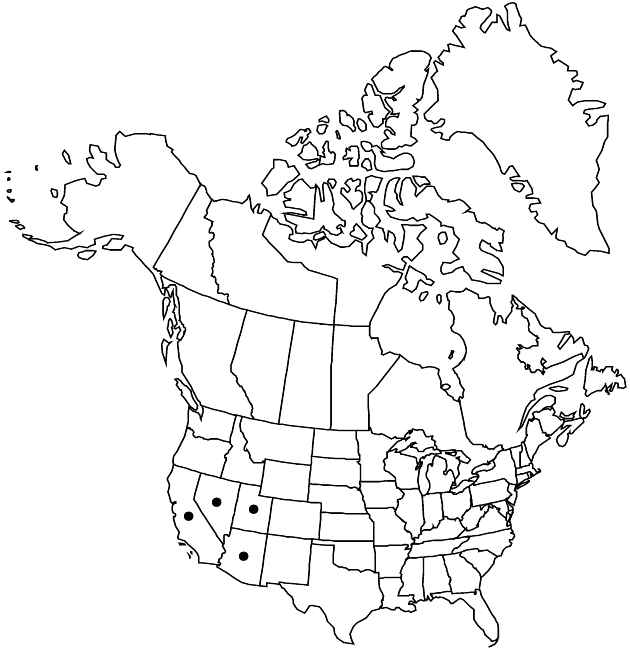Baileya pleniradiata
Mem. Amer. Acad. Arts, n. s. 4: 105. 1849.
Plants mostly 15–45 cm. Leaves: basal rosettes not persistent; basal leaves mostly 2–7 × 0.5–2.5 cm; petioles 1–3 cm; blades oblanceolate, often pinnately lobed; cauline leaves gradually reduced distally. Heads borne singly. Peduncles 3–12 cm. Involucres hemispheric, mostly 5–8 × 7–12 mm Phyllaries mostly 21–34, floccose-tomentose. Rays mostly 20–40; laminae elliptic to obovate, mostly 7–10 × 4-7 mm, apices shallowly 3-toothed. Disc-florets mostly 40–50; corollas 3 mm, tubes 0.3 mm, lobes 0.25 mm; style-branch apices acute. Cypselae 3 mm. 2n = 32.
Phenology: Flowering Mar–Nov (depending on rains).
Habitat: Sandy plains and mesas
Elevation: 100–2000 m
Distribution

Ariz., Calif., Nev., Utah, Mexico (Baja California), Mexico (Sonora)
Discussion
Baileya pleniradiata is superficially similar to B. multiradiata and autumnal forms of the latter have often been misidentified as the former (see discussion under B. multiradiata). The two species occasionally occur together or in proximity; hybrids have not been noted. Style appendages readily allow distinction between the two taxa.
Selected References
None.